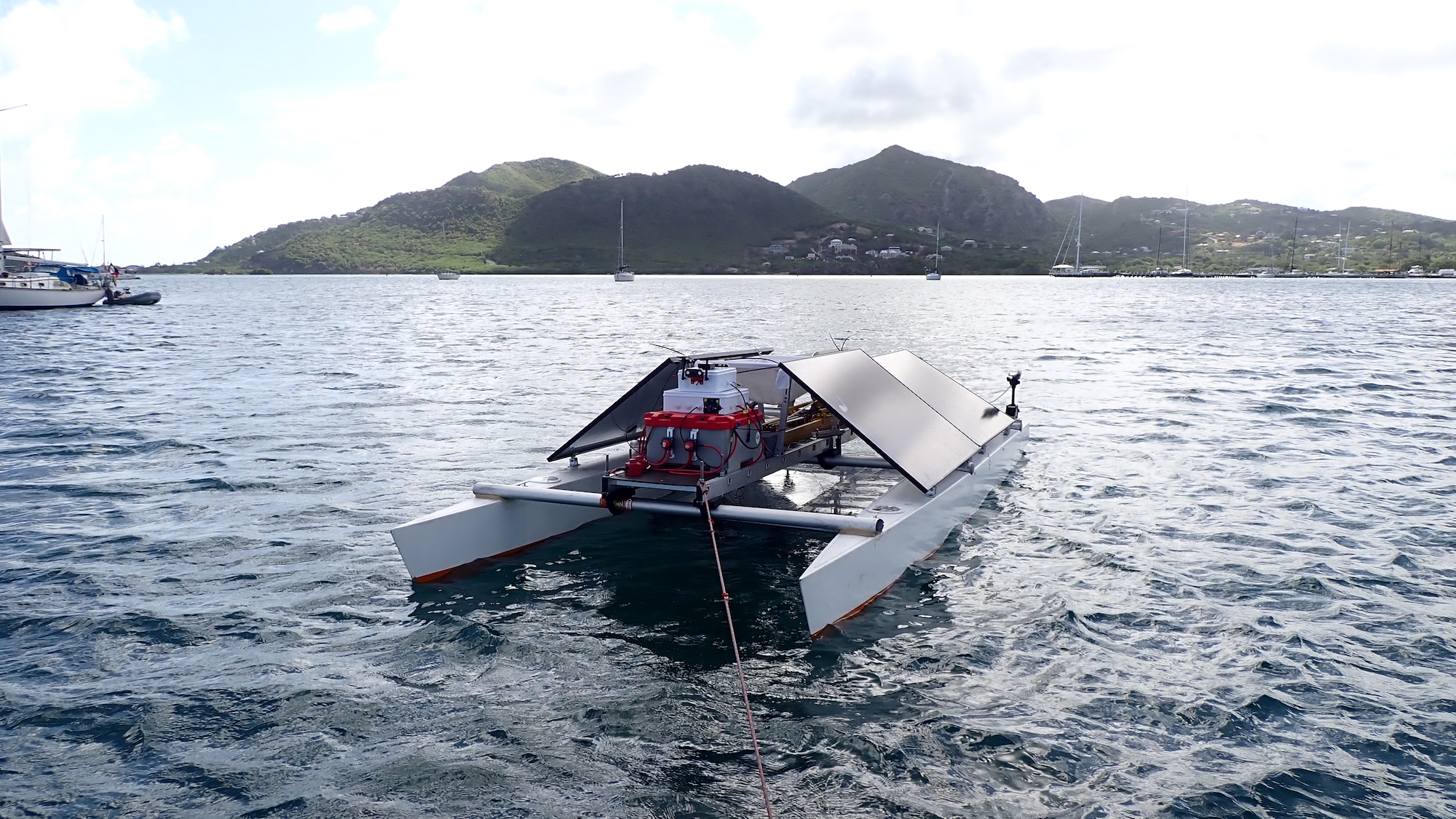

If you’ve ever spent time on a beach in the Gulf of Mexico or the Caribbean, there is a solid chance you stumbled across a slimy mass of stinky, sulfurous-smelling seaweed. The specific marine plant in question during those gross encounters is likely sargassum—while helpful for absorbing CO2, sargassum is also incredibly invasive, and can wreak havoc on both shoreline and ocean ecosystems. Cleanup efforts can cost tens of thousands of dollars while disrupting both tourist and fishing industries, but a recent aquatic robot project is showing immense promise in alleviating sargassum stress. In fact, AlgaRay’s recent successes have even earned it a spot on Time’s Best Inventions of 2023.
Co-designed by Seaweed Generation, a nonprofit organization dedicated to utilizing the versatile plant to help mitigate and remove carbon emissions, an AlgaRay prototype is currently patrolling off the coasts of Antigua. There, the roughly 9-foot-wide robot scoops up clumps of sargassum until its storage capacity is filled, at which point the autonomous bot dives 200m below the surface.
[Related: Rocks may be able to release carbon dioxide as well as store it.]
At this depth, the air pockets that make sargassum leaves so buoyant are so compressed by the water pressure that it simply can’t float anymore. Once released by AlgaRay, the seaweed then sinks to the ocean floor. According to a new writeup by Seaweed Generation’s partners at the University of Exeter, the robot can repeat this process between four and six times every hour. And thanks to a combination of solar panels, lithium batteries, and navigational tools connected to Starlink’s satellite internet constellation, AlgaRay will “ultimately be able to work almost non-stop,” reports the University of Exeter.
Of course, ocean ecosystems are complex and delicate balancing acts at any depth. AlgaRay’s designers are well aware of this, and assure its potential additional ocean floor CO2 deposits won’t be carried out recklessly. Additionally, they note sargassum blooms—exacerbated by human ecological disruption—are already causing major issues across the world.
“Sargassum inundations… cause environmental, social and economic disruption across the Caribbean, Central US and West African regions,” Seaweed Generation CEO Paddy Estridge and Chief of Staff Blythe Taylor, explain on the organization’s website. “Massive influxes of seaweed wash ashore and rot, releasing not just the absorbed CO2 but hydrogen sulfide gasses, decimating fragile coastal ecosystems including mangroves and seagrass meadows and killing countless marine animals.”
[Related: The US is investing more than $1 billion in carbon capture, but big oil is still involved.]
Estridge and Taylor write that humans “need to tread carefully” when it comes to depositing biomass within the deep ocean to ensure there are no “negative impacts or implications on the surrounding environment and organisms.” At the same time, researchers already know sargassum naturally dies and sinks to the bottom of the ocean.
Still, “we can’t assume either a positive or negative impact to sinking sargassum, so a cautious pathway and detailed monitoring has been built into our approach,” Estridge and Taylor write. “The scale of our operations are such that we can measure any change to the ocean environment on the surface, mid or deep ocean. Right now, and for the next few years our operations are literally a drop in the ocean (or a teaspoon of Sargassum per m2).”
As the name might imply, the AlgaRay is inspired by manta rays, which glide through ocean waters while using their mouths to filter and eat algae. In time, future iterations of the robot could even rival manta rays’ massive sizes. A nearly 33-foot-wide version is in the works to collect upwards of 16 metric tons of seaweed at a time—equal to around two metric tons of CO2. With careful monitoring of deep sea repositories, fleets of AlgaRay robots could soon offer an efficient, creative means to remove CO2 from the atmosphere.
“The [Intergovernmental Panel on Climate Change] has been very clear that we need to be able to remove (not offset, remove) 10 billion [metric tons] of carbon a year from the atmosphere by 2050 to have a hope of avoiding utter catastrophe for all people and all earth life,” write Estridge and Taylor. Knowing this, AlgaRay bots may be a key ally for helping meet that goal. If nothing else, perhaps some beaches will be a little less overrun with rotting seaweed every year.
